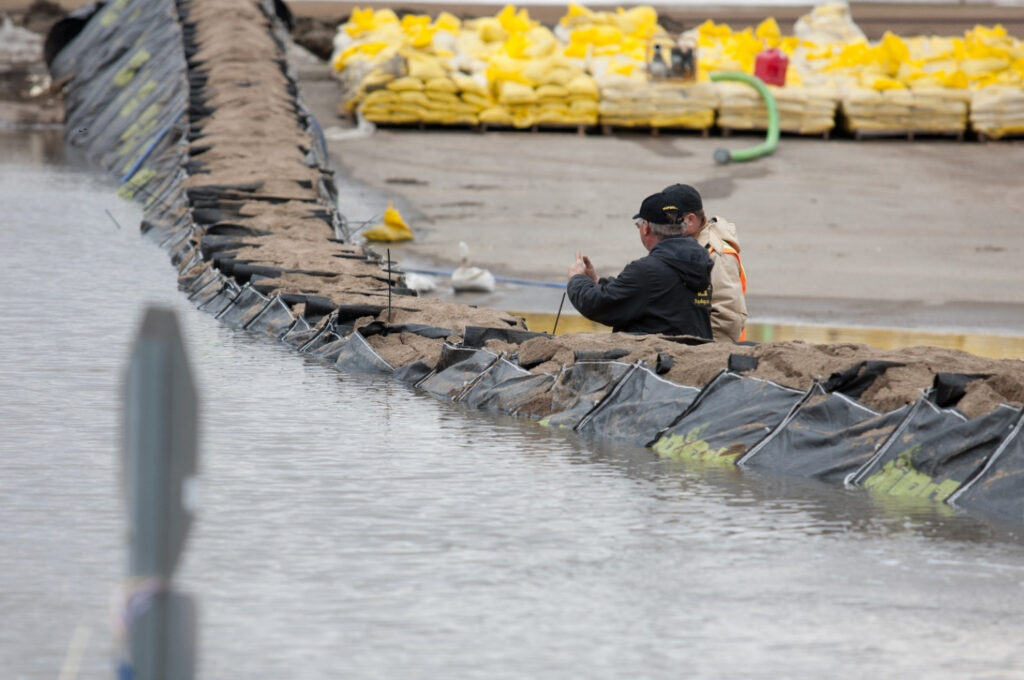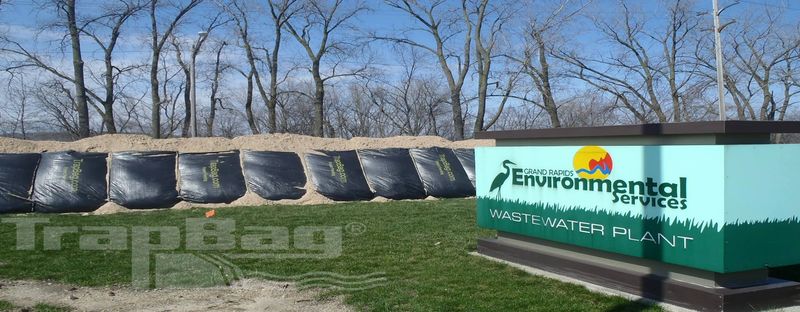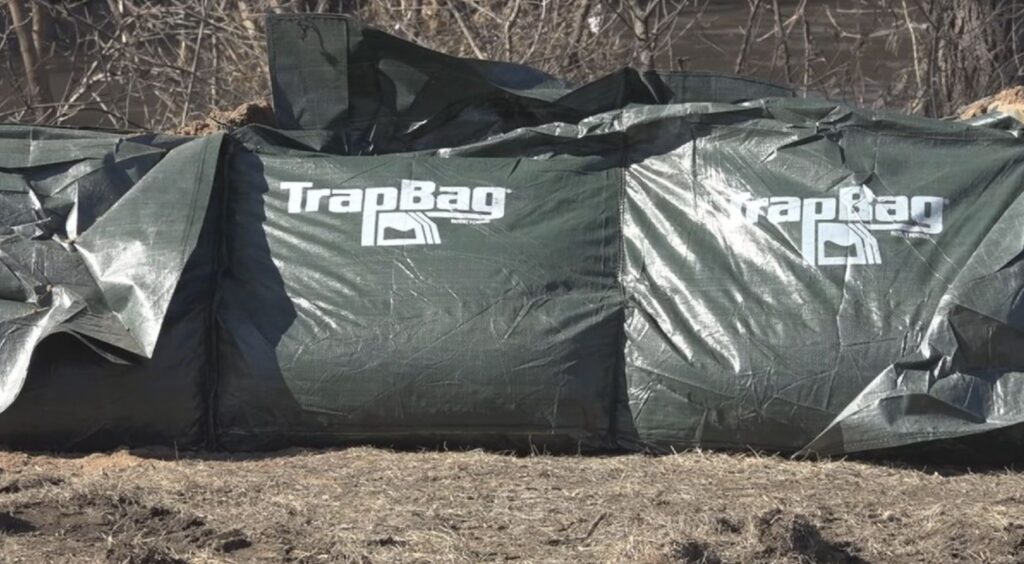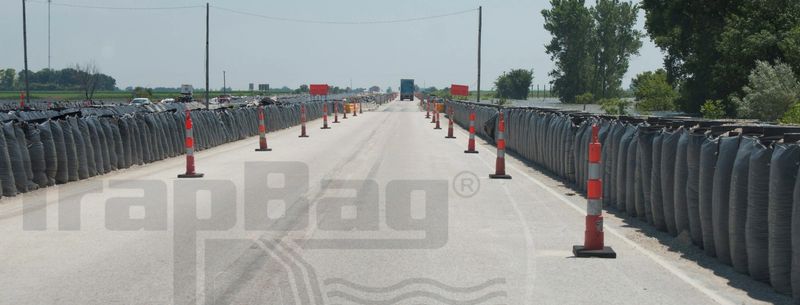Using TrapBag for Flood Protection Solutions
Practically any area near a river, stream, or shoreline has at least some risk of flooding, no matter the season. Since water is essential for sustaining life, many of these bodies of water have had cities constructed around them over the years.
To protect these areas from flooding, TrapBag is the ultimate solution. It’s a low-cost, rapid-deployment flood barrier bag that is similar to, yet improves upon, the design of conventional sandbags. The U.S. Army Corps of Engineers has successfully tested it as a cellular flood barrier that can withstand severe wave action and flooding.
How TrapBags Are Deployed as Flood Control Barriers
TrapBag is easier to install than other types of flood protection barriers. Each cell in a TrapBag barrier interconnects with its neighbors to strengthen the entire barrier. This allows it to hold back even severe floodwaters during historical flooding events.
The barrier can be set up easily in just a few steps:
-
Open the packaging: TrapBag barriers come folded up on a pallet. Pull them out like an accordion and stretch them up to 50 linear feet per unit.
-
Place the barrier where you need it: Place the TrapBag barrier wherever you might need it to mitigate flood damage.
-
Fill the cells: A team of three people with an excavator or skid steer can fill your TrapBag barrier within minutes with sand, washed gravel, or concrete. You can also stack a 2-ft barrier on top of it for added height. Anything over 6 ft of height will require a pyramid configuration (2 rows of 4-ft back-to-back with the third row stacked on top for 8 ft height).
Who We Serve
TrapBag works with companies across countless industries to protect what matters most to them. Some of the industries we help include:
Municipalities
Government organizations need flood defense systems to keep homes, businesses, and infrastructure like highways and sewer systems safe from coastal or river flood damage.
Learn More »Construction sites
Construction crews can use TrapBag to protect their project sites and prevent damage and setbacks to the project timeline.
Learn More »Coastal & civil engineers
Both along the coast and inland, civil and coastal engineers need flood protection solutions to prevent damage to infrastructure like water lines, highways, and sewer systems.
Learn More »Emergency management
TrapBag enables emergency management teams to set up effective flood barriers in a fraction of the time needed for a standard sandbag barrier.
Learn More »Mining
Mining companies can use TrapBag to prevent severe flooding in open-pit mines, preventing wastewater and pollutants from leaving the site during flood events.
Learn More »Projects
How TrapBags Compare to:
For centuries, sandbags were often the only solution people had to protect their communities from flooding. They’re relatively inexpensive and can be stacked to create a flood barrier that protects houses and other structures from storm surges.
However, sandbags aren’t ideal flood control bags compared to TrapBag. They have a much higher margin of error that can cause them to fail or give way during flooding events, causing serious damage. They’re also labor-intensive to fill. It can take days and thousands of sandbags to create a flood barrier large enough to protect your community effectively.
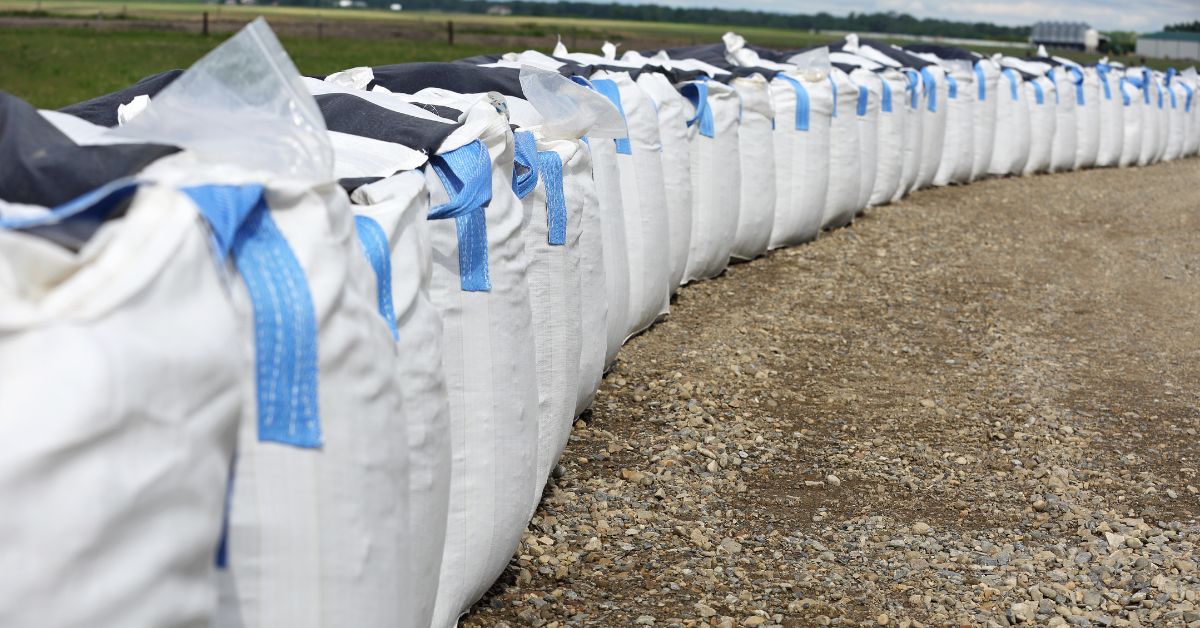
These flood protection products are designed to be filled with water and divert floodwaters away from buildings and structures. Many water barriers are reusable, so they’re handy for preventing water infiltration during flooding events.
However, flood water barriers aren’t a practical solution for severe flooding because they typically aren’t more than a few feet tall. TrapBags, however, start at 4 feet tall at a minimum. They’re also stackable, so emergency crews can create even taller barriers to stand up to catastrophic flooding events.
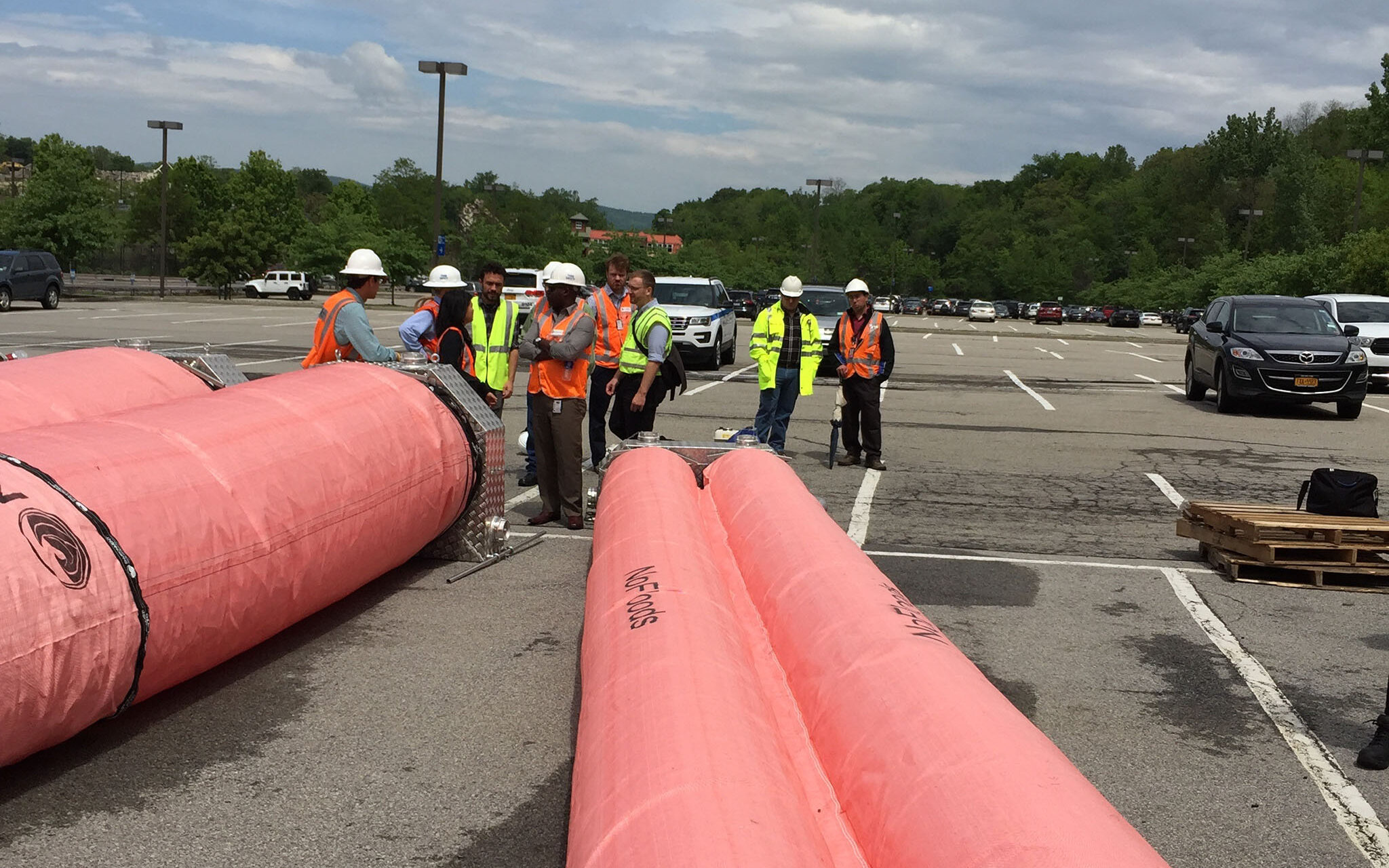
Floodgate systems are a permanent form of commercial flood protection. Some municipalities in particularly flood-prone areas use them to protect buildings and lives from severe flooding. Ahead of predicted flooding events, crews can close the floodgates to protect vulnerable areas from the worst of the flood damage.
However, as a long-term solution, floodgates take a long time to properly install. They’re also unfeasibly expensive for many communities and aren’t a practical solution for any area that can flood. TrapBags can serve as temporary flood protection barriers to protect these areas just as well as a floodgate system for a fraction of the total cost.
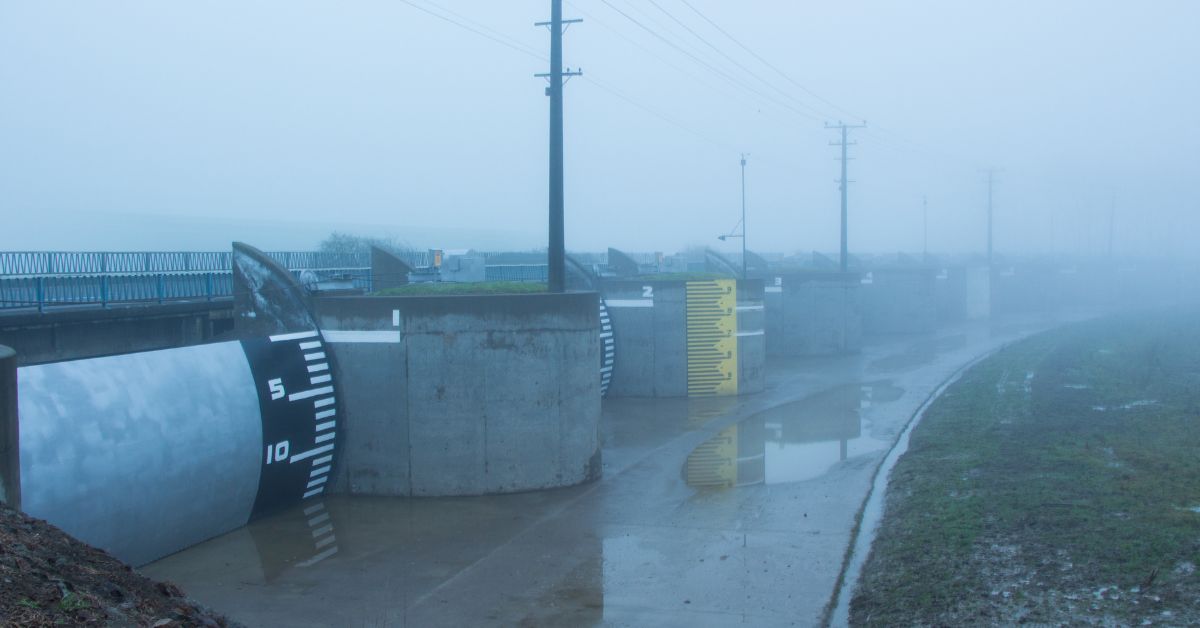
Why Choose TrapBag as a Flood Control System?
TrapBag was first designed in 2004 by our founder, Everett “Buzz” Waid, as an all-around improved alternative to traditional flood control solutions after a hurricane devastated his Florida community. Since then, we’ve installed hundreds of miles of flood barriers worldwide.
TrapBag improves on the traditional design of sandbags. One 100-foot section of TrapBags replaces 8,000 sandbags. We engineered the cells in these flood protection barriers with a pentagonal shape with one sloped side and one vertical side for added structural integrity.
Our dedicated staff wants to ensure you can protect what matters most. Our team is here to help 24/7 across multiple countries and continents.

